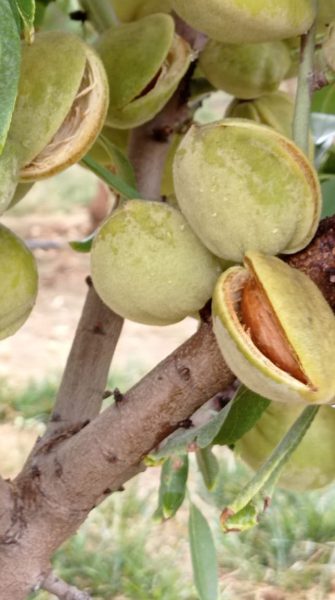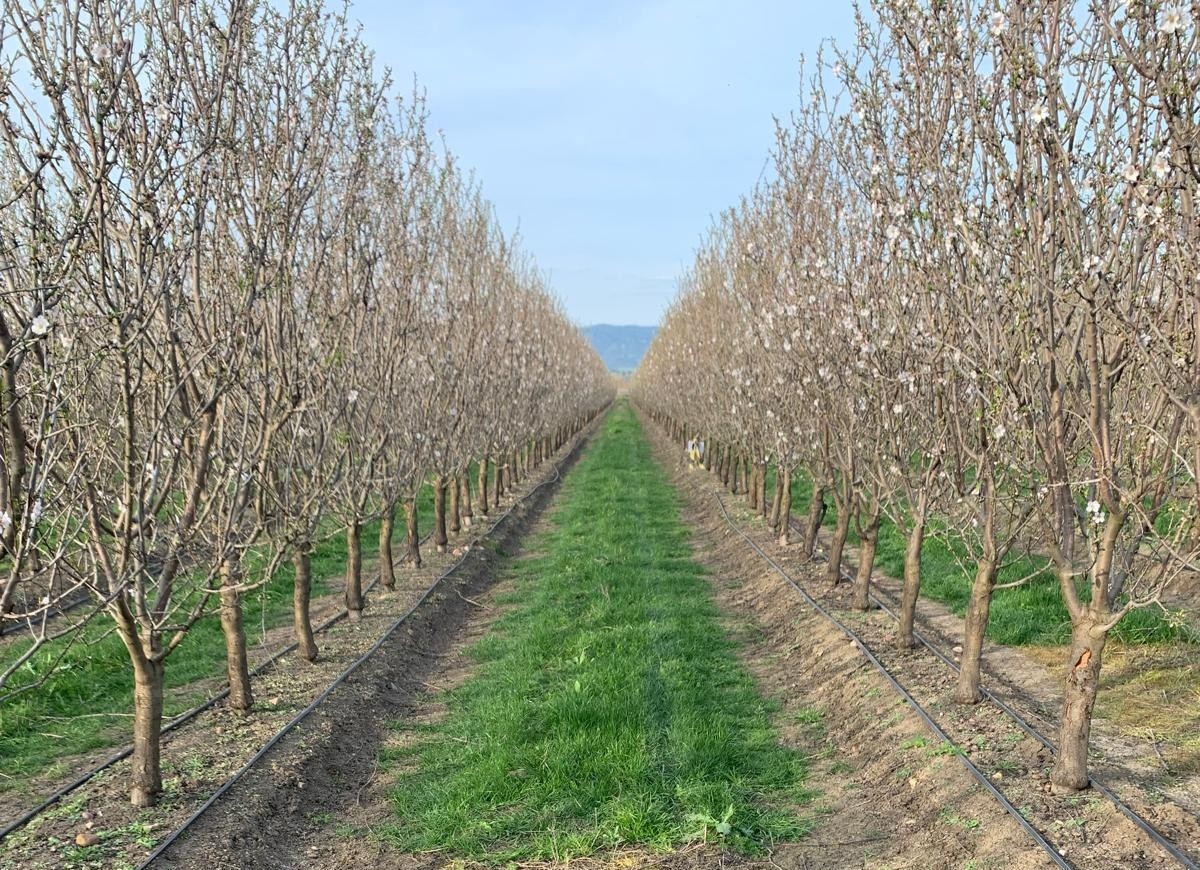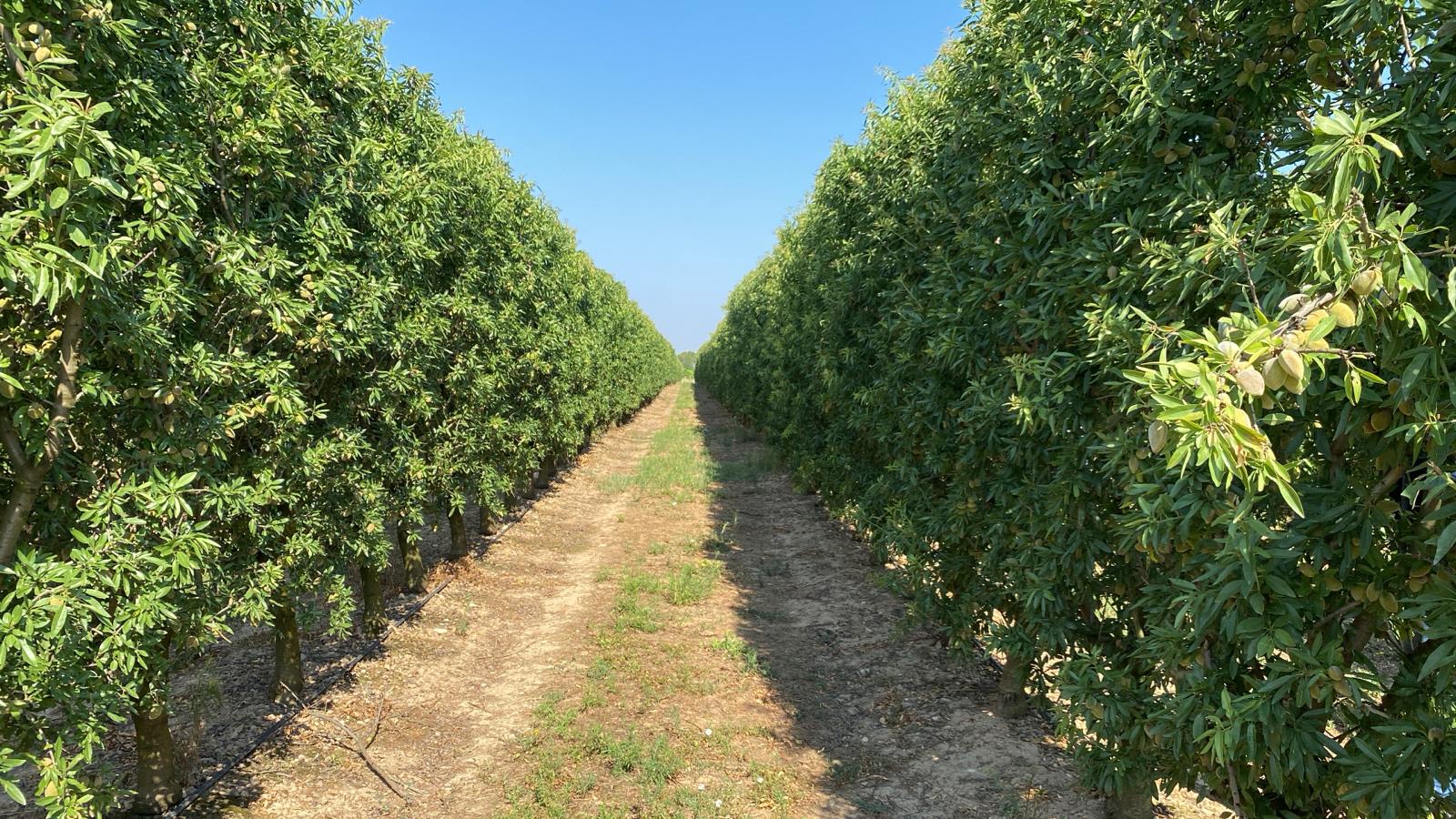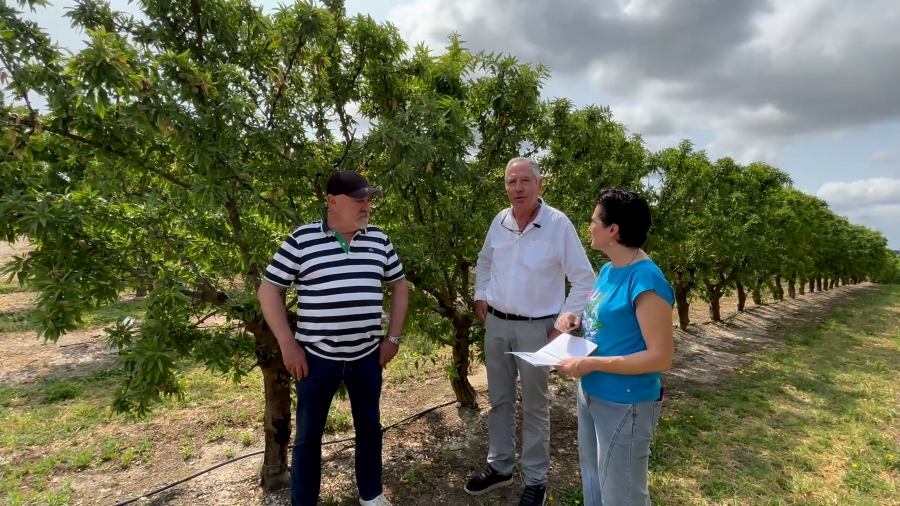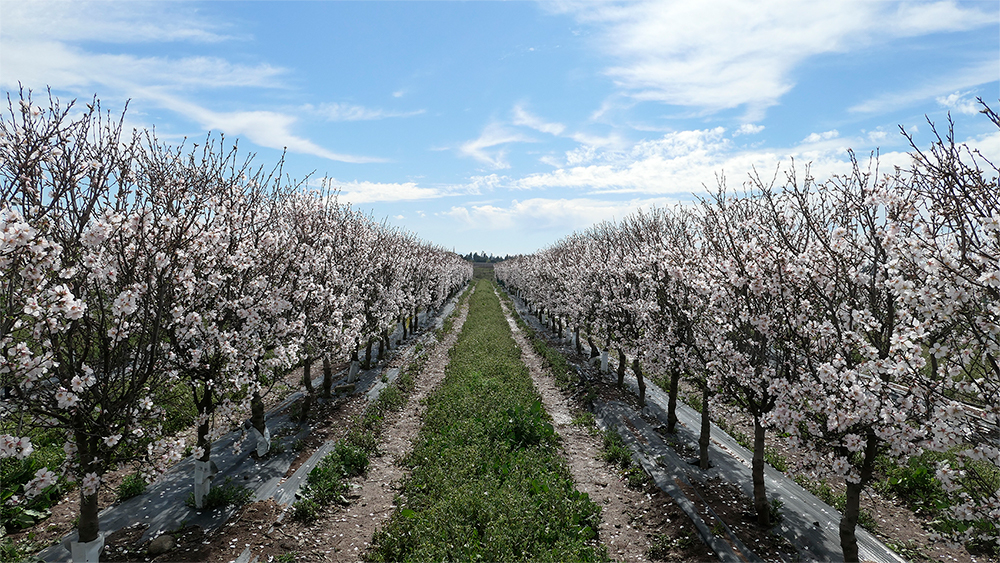The Almond Tree Revolution Starts from the Ground Up
The innovation of super-intensive orchards, which began thanks to dwarfing rootstocks, is now spreading in Italy also thanks to bare-root seedlings. VCR’s experience is contributing to the growth of this crop.
From South to North, a whirlwind of delicate white petals is gradually bringing new life to the agricultural landscape, climbing its way up the Italian peninsula. It’s a sign of a decisive renewal—but one that no longer coincides with the early start of spring, aiming instead to escape the risk of frost. The almond tree, with its promising blossoms and healthy fruits, is gaining ground in Italy thanks to a dual momentum.
New Consumption Opportunities
Demand continues to rise (per capita consumption in Italy has jumped nearly 50% in five years, reaching 2.2 kg per year — Inc data), driven by a focus on wellness and changing consumption patterns (in the EU, almonds are now an ingredient in over 5,000 ready-made food products — Innova Market Insights). “Yields, profitability, and sustainability of this crop,” comments Yuri Zambon, director of VCR, Vivai Cooperativi Rauscedo, “have greatly improved thanks to a technical revolution that began at the grassroots—literally from the roots and the drive for redemption among the earliest links of the agri-food chain.”
Enterprising Entrepreneurs
After centuries of unchanged agronomic practices, almond cultivation has been completely reimagined over the past 20 years, first in Spain, and then by brave entrepreneurs who brought the super-intensive orchard model and its less intensive variants to Italy.
The Breeding Trigger


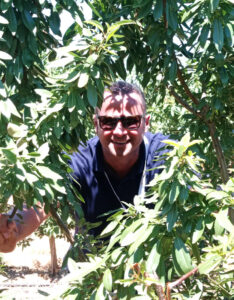
From Zero to 1,550 Hectares in 15 Years
High-density almond orchards have been present in Italy for about 15 years. Today, they cover around 1,500 hectares, growing at a rate of about 200 hectares per year, with nearly 80% concentrated in the region of Puglia. However, the largest single orchard is in Maccarese, just north of Rome, with 120 hectares entering production in 2022 and a goal of expanding to 160 hectares.
In Imola, in the province of Bologna, VCR has partnered with Romagna Impianti and the service company Fruit Net System to create a three-hectare high-density pilot orchard—fully mechanized and digitized for water management and plant health monitoring. This installation serves as a showcase for the efforts of CIMM, the newly formed Consorzio Italiano Mandorlo Moderno (Italian Consortium for Modern Almond Farming), led by Michele Zaniboni of Romagna Impianti. The consortium aims to promote almond cultivation in central and northern Italy as well.
Backed by VCR, this new alliance is committed to revitalizing the national almond sector through truly sustainable farming practices—both economically and environmentally.
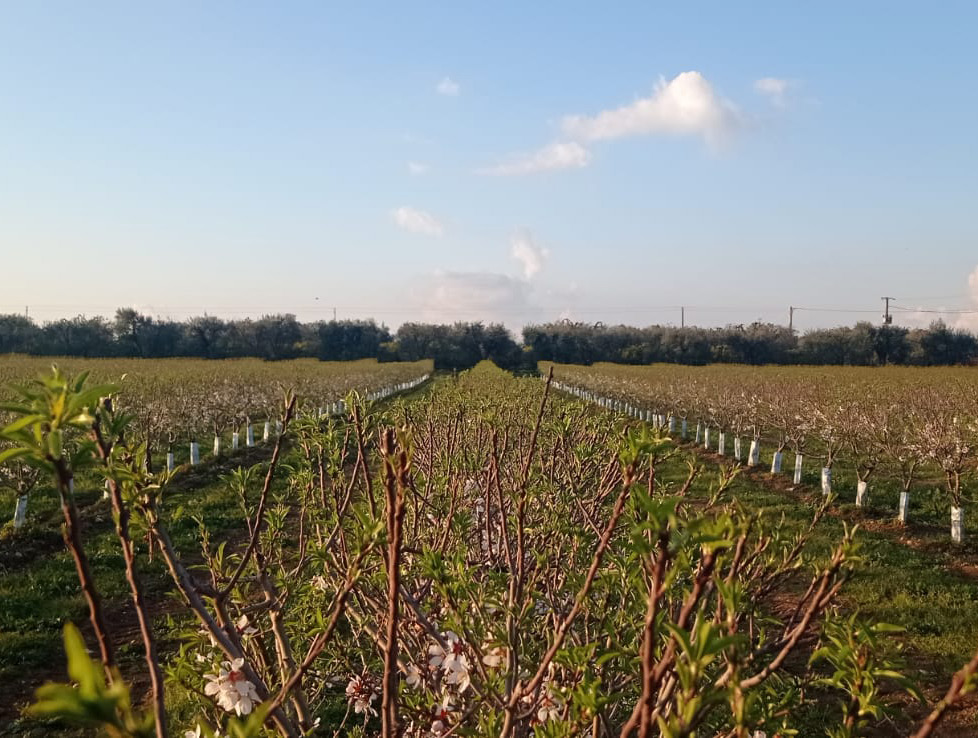
More Technical Support Needed
The VCR Protocol
“We’ve developed,” adds Gianluca Pegoraro, technical advisor at VCR, “an agronomic protocol that ensures high nursery yields. Some of its key recommendations—such as solid base fertilization and alternating periods of mild water stress with irrigation to stimulate root system expansion—are also applied in the field to boost orchard performance.”
The soil and climate conditions of the Friulian plains have also proven ideal for nursery production of almond trees. In Rauscedo, they’re currently producing the fourth crop cycle of almond seedlings. From 40,000 in 2022, they plan to reach 500,000 by 2025, with the Avijor variety leading over Penta and Makako. They are also betting on the growing demand for bare-root seedlings—an alternative to potted plants, optimized by VCR thanks to its expertise in grapevine propagation.
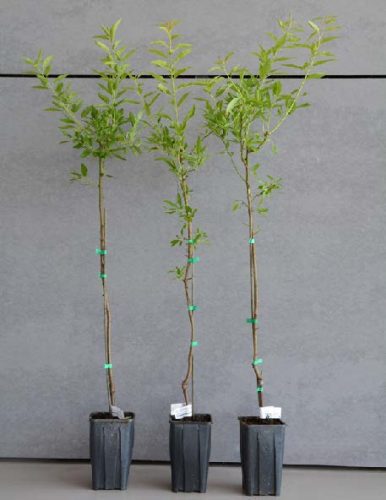
The Benefits of Bare-Root Stock
“In the Imola pilot orchard,” explains Matteo Ferrari of Fruit Net System and technical advisor to CIMM, “it became clear that bare-root plants have a distinct head start. They allow for entry into production a year to a year and a half earlier, helping growers better recover their investment.”
This advantage comes from their more developed root systems and higher reserves of stored nutrients—so much so that plant losses are minimal or nonexistent. Once again, innovation starts from the ground up—from the roots.
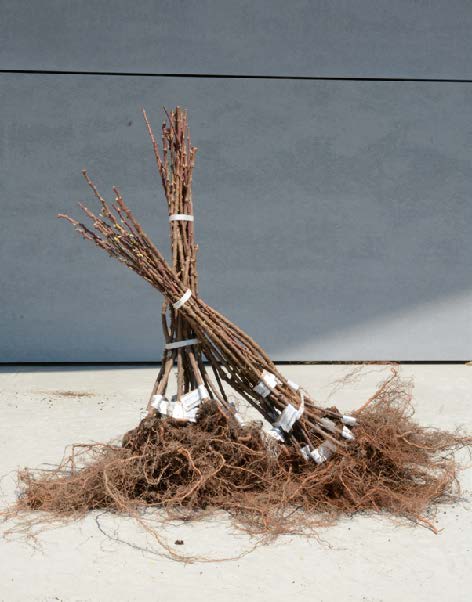
Mistakes to Avoid
In high-density orchards, it’s important to follow specific guidelines: the height of the first scaffold (branching point) should be 50–60 cm above the ground; the maximum tree height should be 3 meters; and the canopy (or fruiting wall) width should be kept between 70 and 90 cm to match the specifications of over-the-row harvesters and optimize their efficiency.
Proper canopy density must be achieved through mechanical pruning, which needs to be carefully managed and repeated during the early years. This encourages the growth of numerous productive shoots, resulting in a higher number of flower buds and fruiting spurs per tree.
In other words: the revolution may start at the roots, but without proper guidance at the top, it won’t go far.
Training Systems
Traditional Orchards
Planting density ranges between 300 and 400 trees per hectare. Mechanization is mostly limited to harvesting with an inverted umbrella shaker and possibly external canopy pruning. Manual labor is still required for removing internal suckers.
Intensive High-Density Systems
These orchards contain 700–800 trees per hectare, with planting layouts around 5 x 3 meters (the “Zaragoza system”). The goal is to combine high planting density with allowing the tree to naturally grow in height. These systems require high levels of fertilization and irrigation. Harvesting can be mechanized using specific equipment, though pruning remains partially manual. The vase-shaped training system requires the canopy to be widened by thinning branches, which improves light penetration and increases yields.
Super-High-Density Systems with Continuous Harvesting (SHD)
These systems exceed 2,000 trees per hectare, with planting layouts of 3–3.5 x 1–1.3 meters. They are fully mechanized, using the same harvesters and pruning equipment as those used in high-density vineyards and olive groves. The system shifts from the traditional 3D vase structure to a 2D continuous wall structure, which results in the highest yields (up to 3 metric tons of shelled almonds per hectare in the case of Avijor) with less overall vegetative mass—translating into better productivity efficiency. While these systems have high irrigation demands, they can be made more sustainable in low-water areas by using self-rooted plants.

Rootstocks
RootPac® 20: A dwarfing, highly productive rootstock. Reduces vigor by 60% compared to GF-677. Easier to manage with full mechanization. Resistant to soil fungi and nematodes.
RootPac® R: A versatile rootstock adaptable to different climates, soils, and water availability. Ideal for medium-intensity systems. It is highly productive and can advance ripening by 2 to 5 days, depending on the variety.
Self-Rooted Plants: Best suited for unirrigated areas due to almonds’ natural drought resistance. Rooting issues are resolved via in vitro propagation. As irrigation costs rise—sometimes exceeding €1 per cubic meter—this option is becoming more attractive.
Bare-Root Plants: An alternative to potted plants, they feature a well-developed root system and tall central leader with the first scaffold branches already established at 50 cm height. Advantages include:
- Entering production 1 to 1.5 years earlier
- Reducing the need for support stakes
- Lowering irrigation needs during early growth stages.
Varieties
The plant material for intensive and super-intensive systems centers on micropropagated varieties bred to resist climate change and adapt to different Italian environments:
Avijor (Lauranne): Late blooming (second week of March), medium branching, single well-formed kernel, shell-out rate of 35–40%. It’s the most widely validated variety across Italy.
Makako: Extra-late blooming (mid-March), medium branching, lower shell-out rate than Avijor, hardy and disease-tolerant, suitable for organic farming.
Penta: Extra-late blooming, highly branched, medium-low vigor, produces smaller single kernels compared to Avijor.
Late blooming helps avoid periods with the lowest temperatures, but in recent years the risk of late frosts has increased due to climate change. For orchards in Northern Italy, it’s advisable to install frost protection systems, such as anti-frost irrigation or other active methods.
